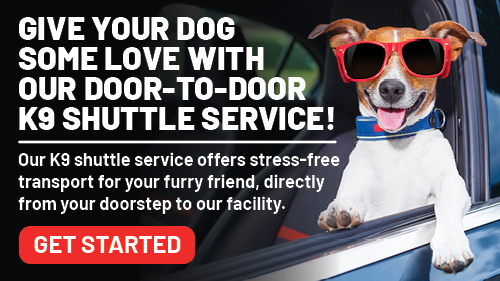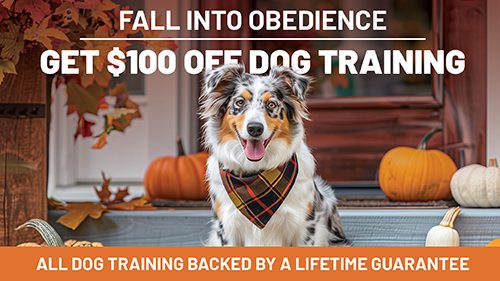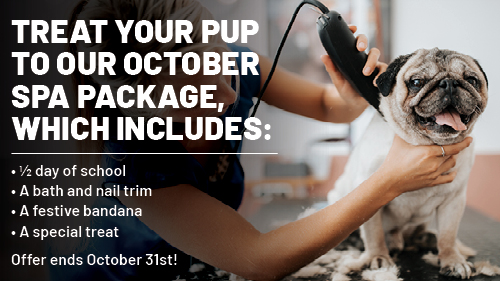
Leash reactivity in dogs is a common problem that many dog owners face. It occurs when a dog becomes overly excited, anxious, or aggressive while on a leash when they encounter certain triggers like other dogs, people, or even specific objects. This behavior can be stressful for both the dog and the owner, but don’t worry – with the right approach, you can manage and improve leash reactivity.
In this blog, we will explore what leash reactivity in dogs is, its causes, and most importantly, how to manage and reduce these behavioral issues effectively. If you’re a dog owner struggling with leash-related problems, this guide is for you.
What is Leash Reactivity in Dogs?
Leash reactivity in dogs refers to the intense, often aggressive reactions dogs have while on a leash when they encounter something that excites, frightens, or frustrates them. These reactions typically involve barking, lunging, growling, or pulling. While it can be alarming for owners, it is usually a sign that your dog is overwhelmed by something in their environment. Understanding what causes this behavior is key to resolving the issue.
Common Causes of Leash Reactivity
There are several reasons your dog might react negatively while on a leash. Some of the most common causes include:
- Fear: If your dog is unsure or scared of another dog, person, or object, they might react aggressively to protect themselves.
- Frustration: Your dog might feel frustrated that they cannot approach something or someone they want to interact with.
- Lack of Socialization: Dogs that have not been properly socialized may struggle to cope with new or unfamiliar situations.
- Poor Leash Training: If your dog has not been trained to walk calmly on a leash, they may develop leash reactivity due to the lack of control.
How Leash Reactivity Affects You and Your Dog
Leash reactivity can make walking your dog a stressful experience. If your dog is constantly pulling, barking, or lunging at other dogs or people, it can be difficult to enjoy walks. This can also be embarrassing, especially when your dog’s behavior attracts unwanted attention. Over time, leash reactivity can negatively affect the relationship between you and your dog, leading to frustration and confusion.
For your dog, leash reactivity can cause anxiety, stress, and frustration. They may start to associate walks with unpleasant emotions or experiences. If the problem isn’t addressed, the behavior can escalate, leading to more severe aggression and difficulty in social situations.
Solutions for Leash Reactivity in Dogs
The good news is that leash reactivity can be managed and improved with consistent training and patience. The following are some proven techniques to help you manage and reduce leash reactivity in your dog.
Start with Proper Leash Training
Leash training is the foundation of managing leash reactivity. If your dog has not been trained to walk calmly on a leash, they are more likely to react to triggers. The first step in leash training is teaching your dog to walk beside you without pulling.
Here are a few basic leash training tips to get started:
- Use the Right Equipment: Use a comfortable harness or leash that provides control without causing harm to your dog.
- Reward Calm Behavior: Praise and reward your dog when they walk calmly beside you without reacting to external triggers.
- Consistency is Key: Train your dog regularly and be consistent with commands. This helps them understand what behavior is expected.
Identify and Manage Triggers
To effectively manage leash reactivity, it’s essential to identify the triggers that cause your dog to react. Triggers can vary from one dog to another but typically include:
- Other dogs
- People (especially strangers or children)
- Moving objects like bicycles or cars
Once you’ve identified the triggers, work on desensitizing your dog to them. Start by exposing your dog to the trigger from a safe distance, where they feel comfortable. Gradually decrease the distance over time while rewarding calm behavior. This will help your dog learn that there’s no need to react aggressively to the trigger.
Use Behavior Modification Techniques
Behavior modification is an essential part of managing leash reactivity in dogs. It involves changing the way your dog reacts to specific situations. One of the most common techniques is counter-conditioning, which helps change your dog’s emotional response to triggers.
For example, if your dog reacts aggressively to other dogs, you can use counter-conditioning by rewarding them with treats when they remain calm while seeing another dog. This teaches your dog to associate the presence of other dogs with positive experiences, rather than something to be feared or reacted to aggressively.
Practice Desensitization
Desensitization is a gradual process where you expose your dog to their triggers in a controlled and calm manner. This helps your dog become more comfortable with situations that normally cause them stress or anxiety.
For example, if your dog reacts to other dogs on walks, begin by keeping a safe distance from other dogs. Gradually bring them closer as your dog remains calm. Over time, your dog will become less reactive as they learn that being near other dogs is not threatening.
Keep Your Dog Focused on You
Another effective technique is to redirect your dog’s attention away from their triggers. This can be done by using treats, toys, or verbal cues. When your dog becomes fixated on a trigger, redirect their focus back to you.
For instance, if your dog sees another dog and begins to react, ask them to sit or stay, and reward them for focusing on you. This teaches them that paying attention to you, rather than reacting to the trigger, leads to positive rewards.
Manage Your Expectations
Managing leash reactivity takes time and patience. You may not see instant results, but with consistent training and practice, your dog will improve. Remember to keep training sessions short and positive, and be patient with your dog as they learn to manage their reactions.
A Simple Table on Leash Reactivity Management
| Step | Description | Benefits |
| Leash Training | Teach your dog to walk calmly on a leash. | Helps reduce pulling and unwanted behaviors. |
| Identify Triggers | Recognize the specific situations that cause reactivity. | Allows for targeted training. |
| Desensitization | Gradually expose your dog to triggers. | Reduces fear and anxiety over time. |
| Behavior Modification | Change your dog’s response to triggers through rewards. | Promotes calm and positive behavior. |
| Redirection | Focus your dog’s attention on you during a reaction. | Builds a strong bond and reduces reactivity. |
Additional Tips for Successful Leash Training
- Be Patient and Consistent: It’s important to be patient with your dog and stay consistent with training.
- Use Positive Reinforcement: Reward good behavior with treats, praise, or toys to encourage your dog to repeat it.
- Consider Professional Help: If your dog’s leash reactivity is severe, consider working with a professional dog trainer who specializes in behavior modification and leash training.
Take Action Now for a Better Walk!
Managing leash reactivity in dogs is completely possible with the right tools and techniques. By focusing on leash training, identifying triggers, using behavior modification, and being patient, you can help your dog become calm and focused on walks. The key to success is consistency and understanding that every dog progresses at their own pace.
If you’re struggling with leash-related behavioral problems, don’t wait any longer. Start implementing these strategies today for a happier and more peaceful walking experience with your dog. If you need help or guidance, contact us today. We are here to help you and your dog overcome leash reactivity and enjoy your walks together. Let’s get started on building a better relationship with your furry friend!
SCHEDULE A MEET AND GREET
Thank you for loving him!
While there, he did have a medical event which came as a surprise to everyone, I received a call explaining the situation and a suggested course of action. Being overseas there was little I could do. Again, Jenny and the Top Dog staff stepped up going beyond the call for Loki. Today, we picked him up, healthy and very happy and I cannot express enough gratitude for the amazing care, play and training these folks did for Loki. You guys are awesome!
Update: 3/15/24 Elodie is still going here and extremely excited when we pull in their driveway. I wish I could add more stars to their review! This past week was Elodie’s second birthday. They threw her a little birthday pawty and gave her a doggie cookie-cake! I updated the photos to show a screenshot of a video they provided to me. I’m so pleased with their care of my fur baby ❤️
FAQs (Frequently Asked Questions)
Leash reactivity in dogs occurs when a dog reacts aggressively or excitedly to certain triggers while on a leash. Common behaviors include barking, lunging, growling, or pulling. This reaction is often a result of fear, frustration, or lack of socialization.
Start with proper leash training, using a comfortable harness or leash that gives you control. Reward your dog for walking calmly beside you and practice consistently. Redirect their attention away from triggers and focus on positive reinforcement.
Common triggers include other dogs, people, vehicles, and unfamiliar objects. Dogs may react to these triggers due to fear, frustration, or excitement, and it’s important to identify these triggers to address the behavior effectively.
Desensitization involves gradually exposing your dog to their triggers in a controlled manner. Over time, this helps reduce their fear or excitement about the trigger, making them less likely to react aggressively when they encounter it during walks.
While both behaviors can appear similar, leash reactivity is often driven by fear, frustration, or excitement. Aggression, on the other hand, is typically more intense and may be directed towards specific people or animals. Leash reactivity can often be improved with training, while aggression might require more specialized behavior modification.
Yes, with patience, consistency, and the right training techniques, you can manage and reduce leash reactivity, even if your dog has been exhibiting the behavior for a while. Working with a professional trainer might also be helpful for severe cases.



